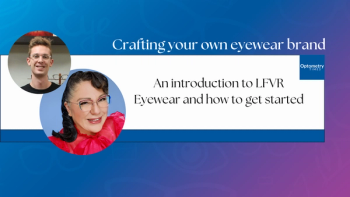
Pain and gain
In this issue is an excellent article by Dr. Zach McCarty that discusses meaningful use and the need for optometrists to comply with the mandatory EHR guidelines by 2014. In his piece Dr. McCarty noted that, as of his writing, only 3,500 or so ODs had registered for meaningful use. Now, that number isn’t surprising since we are a procrastinating lot by nature. I have to admit that I, too, fell in that category.
We’ve all known that we would have to confront our delays regarding EHR at some point, but there has just been so much going on. Office fires to put out every day. I just don’t have the time. Too much paperwork to complete. Letters to write. Bills to pay. Not enough hours in the day. The staff will balk. Computers will confuse our patients. And I really need to have that root canal…
What really inspired our office to explore EHR wasn’t the incentives offered by CMS for implementing EHR. It was the fact that we were drowning in paper. Within a short time, we would have needed to expand our filing capacity yet again to hold all the paperwork. It had to stop, so we began exploring what was available electronically.
Being new to this process, I didn’t want to sink a lot of money into this system if it didn’t suit our needs. However, from my experiences in years past, I knew what I wanted. It goes without saying that my needs are probably very different from someone else’s, but every practice owner should develop his or her own “wish list.” First, I wanted a cloud-based system, one that didn’t require manual backup every day. We also needed a system with a very short learning curve. The harder a system is to implement, the more frustrated you, and more importantly your staff, will grow. For that reason, I wanted something that would run on an iPad because tablets are an amazingly easy technology to learn. I also didn’t want to have to stare at a fixed computer screen at my work desk. Having experience with those set-ups, I think they take away from my patient interaction. I catch myself staring too much at the screen and not spending enough time talking with my patient. I wanted something that was portable and convenient, and I wanted it to be reasonably priced. Perhaps most important, we needed a system that had outstanding customer service. Being neophytes to EHR, we needed a provider that would be patient with us and answer all our questions promptly, because when you have a question you need it answered pretty quickly or else things get backed up in a hurry. This was the most frustrating aspect of my initial foray into EHR, and one I vowed not to repeat. The system also could not slow down the exam process; I don’t have time in the middle of a busy day to hunt and peck on a computer keyboard. In my research, one doctor listed this as his main criteria: The EMR data entry could not slow down his exam process one iota.
So, after much online research and talking with colleagues, we decided on a platform. After using the system for a while now, I’m certain it is slowing down my exam process somewhat, but my staff considers it an even tradeoff because they can finally read what is on the exam form. I have to admit the adaptation process has gone much better than expected, probably because most people these days are much more comfortable working with computers than they were a decade ago. That’s not to say there haven’t been hiccups; there have. The changeover naturally forces you out of your comfort zone, and change can be painful. Yet this technology has so much to offer us, and the integration of these systems is amazing. So, we’re trying to join the 21st century in our little office, even if we are kicking and screaming the whole way.
How has your office approached EHR? I’d be interested in hearing your experiences implementing the technology. Feel free to drop me a line at drbowling@windstream.net.ODT
Newsletter
Want more insights like this? Subscribe to Optometry Times and get clinical pearls and practice tips delivered straight to your inbox.
















































.png)


